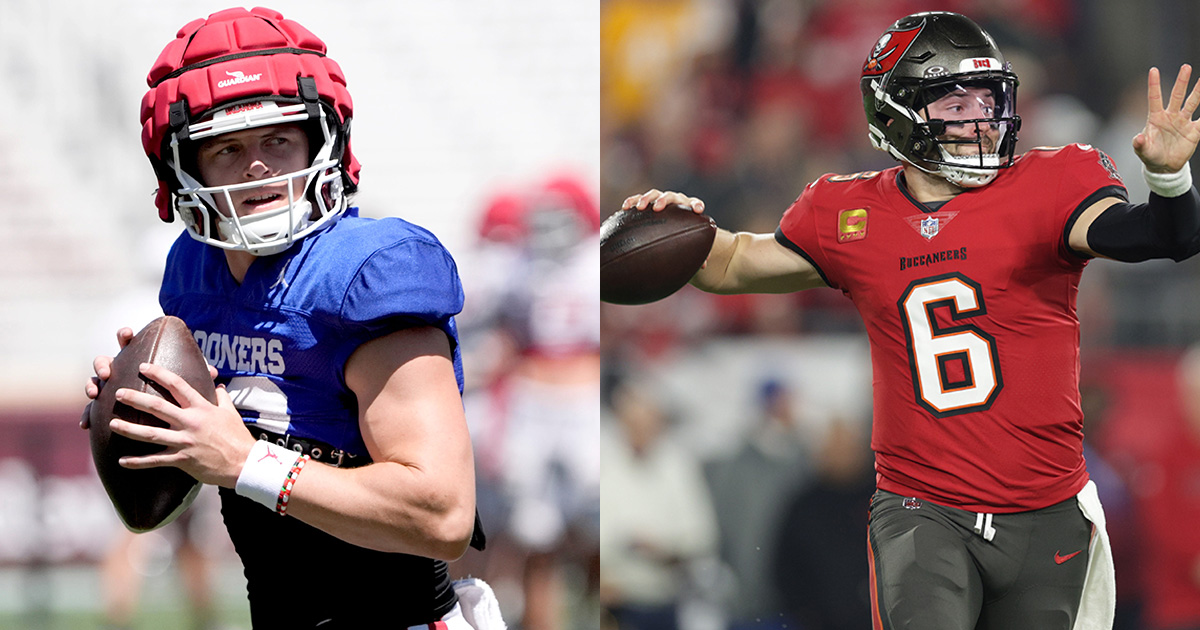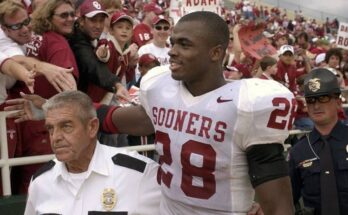Carlson Argues Comparing John Mateer to Baker Mayfield Does a Disservice to Oklahoma’s Emerging Quarterback
In the realm of college football, comparisons between rising stars and legendary predecessors are common. Such parallels often help fans and analysts frame expectations and narratives around emerging talent. However, these comparisons can sometimes be reductive or unfair, glossing over the unique qualities that define a player’s individual journey and potential. This is the case with Oklahoma Sooners quarterback John Mateer, who has frequently been compared to former OU standout and NFL star Baker Mayfield. Yet, according to respected analyst Carlson, this comparison does a disservice to Mateer and the distinctive path he is carving for himself within Oklahoma football.
Baker Mayfield’s legacy at Oklahoma is well-established. Known for his fiery competitiveness, leadership, and clutch performances, Mayfield electrified Sooners fans and earned a Heisman Trophy before transitioning to a professional career. His playing style—marked by grit, swagger, and a gunslinger mentality—set a high bar for successors stepping into the quarterback role at Norman. As such, it’s natural that comparisons to Mayfield arise when a promising young quarterback like Mateer begins to showcase his abilities on the field.
However, Carlson argues that framing Mateer through the lens of Baker Mayfield’s legacy risks oversimplifying the quarterback’s unique talents and contributions. Mateer, he explains, is forging a distinct identity shaped by his own strengths, style, and leadership qualities. While Mayfield’s path was characterized by relentless intensity and bold playmaking, Mateer brings a different kind of composure, decision-making prowess, and adaptability that reflects the evolution of the quarterback position and Oklahoma’s current offensive scheme.
One of the key points Carlson emphasizes is Mateer’s cerebral approach to the game. Unlike Mayfield’s more fiery and sometimes unpredictable style, Mateer demonstrates a calm, measured demeanor that allows him to process complex defenses and execute with precision. This poise under pressure not only aids in reducing turnovers but also helps build trust among teammates and coaches. The quarterback’s ability to read the field and make smart decisions complements the Sooners’ strategic emphasis on balance and efficiency.
Furthermore, Mateer’s leadership style contrasts with Mayfield’s, though no less impactful. Rather than relying on emotional intensity or vocal dominance, Mateer leads by example, displaying consistency in preparation and performance. His quiet confidence and work ethic resonate within the locker room, inspiring teammates through dedication rather than theatrics. This approach fosters a cohesive team culture built on mutual respect and accountability.
Carlson also notes that Mateer’s physical skills differentiate him in important ways. While Mayfield was known for his improvisational ability and willingness to take risks downfield, Mateer combines accurate passing with a versatile running threat that adds a dynamic element to Oklahoma’s offense. His athleticism allows him to extend plays, pick up crucial yards, and keep defenses off-balance without forcing the ball unnecessarily.
The analytical comparison also extends to how Mateer fits within the modern college football landscape. The sport has evolved significantly since Mayfield’s collegiate days, with offensive schemes becoming more diverse and defenses more complex. Mateer’s adaptability and football IQ equip him to thrive in this environment, leveraging technology, film study, and coaching to refine his game continuously. This contrasts with the more instinct-driven style that characterized Mayfield’s rise.
Critics who compare Mateer directly to Mayfield often overlook these nuances, creating expectations that may not align with Mateer’s natural style or Oklahoma’s strategic direction. Such comparisons can place undue pressure on a young quarterback, detracting from his development and confidence. Carlson stresses the importance of evaluating Mateer on his own merits and within the context of his team’s goals.
Oklahoma’s coaching staff shares this perspective, focusing on maximizing Mateer’s strengths rather than fitting him into a predefined mold. Their approach highlights the quarterback’s ability to manage games effectively, distribute the ball efficiently, and lead an offense tailored to his skills. This individualized coaching philosophy aims to cultivate a player who can succeed not just at Oklahoma but potentially at the professional level.
The narrative surrounding Mateer also reflects broader themes in sports analysis: the tension between legacy comparisons and recognizing emerging talent’s unique trajectories. While past stars provide valuable benchmarks, each player’s story deserves to be told with attention to individuality and context. Mateer’s journey exemplifies this principle, as he balances respect for Oklahoma’s quarterback tradition with forging his own legacy.
Fans, too, have a role in shaping this narrative. Embracing Mateer for who he is rather than who he is compared to allows for a richer appreciation of his contributions. Social media and fan forums have shown mixed reactions, with some eager to see Mateer replicate Mayfield’s swagger and others celebrating his distinct style. As the season progresses, performance will further clarify Mateer’s place in Oklahoma’s storied quarterback lineage.
From a performance standpoint, Mateer’s on-field results have begun to speak for themselves. His accuracy, decision-making, and leadership during critical moments have earned praise from teammates and commentators alike. Game film reveals a quarterback capable of managing pressure, exploiting defensive weaknesses, and executing with precision. These attributes bode well for his continued growth and success.
Moreover, the comparison conversation serves as a reminder of the evolving role of college quarterbacks. The position demands a blend of mental acuity, physical ability, leadership, and adaptability. Mateer’s emergence highlights how different styles can succeed within the same program, reflecting the diversity of talent and approach that modern football embraces.
In conclusion, while Baker Mayfield’s shadow looms large over Oklahoma football, it is important to appreciate John Mateer on his own terms. As Carlson articulates, comparing Mateer directly to Mayfield may do a disservice by obscuring the quarterback’s unique qualities and potential. Mateer’s cerebral play, leadership style, and athletic versatility position him as a distinctive talent capable of leading Oklahoma football into a new chapter. By celebrating his individuality and contributions, Sooners fans and analysts can better appreciate the evolving legacy of quarterback excellence at the University of Oklahoma.



